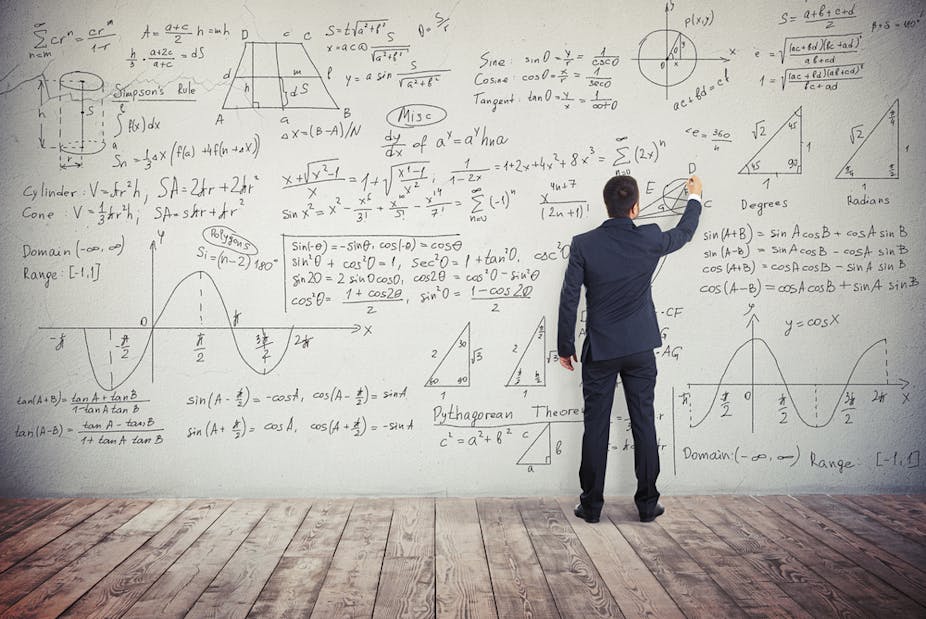Despite the fact that mathematics is often described as the underpinning science, it is often not given enough credit when scientific discoveries are presented. But the contribution of mathematics and statistics is essential and has transformed entire areas of research – many discoveries would not have been possible without it. In fact, as a mathematician, I have contributed to scientific discoveries and provided solutions to problems that biology was yet to solve.
Seven years ago, I attended a lecture on some biological research that was taking place at Heriot-Watt University. My colleagues had an unsolved problem which related to the movement of bag-like structures called vesicles which move hormones and neurotransmitters such as insulin or serotonin around cells and the body.
Their problem lay in that vesicles were known to follow specific tracks along the cell skeleton which lead to special molecules which then caused the vesicle to release its contents into the cell. However, when the biologists themselves tried to find these tracks, they were not in the expected places.

It is important to understand how vesicles behave, or in fact misbehave, as they have been linked to conditions such diabetes and neurological disorders. The biologists were struggling to find a way to understand the vesicles – but I had a solution in my mathematical toolkit.
Maths can beat biology
After two years of collaboration I told my colleagues: “my model and computer experiments are better than your microscope!”
What I meant by this rather confident statement was that by using mathematics to model how molecules move in a cell we could predict and run multiple experiments on a computer at a smaller scale and faster rate than a microscope. It could allow us to uncover things that the biologist’s resources could not, and might even point us in the direction of target molecules for future treatments of diabetes and neurological disorders.
The mathematical model allowed us to recognise that the movement of vesicles requires energy – and the maths models it through an energy landscape. It imagined a vesicle to be like a cyclist riding a bicycle – the landscape may have easy level sections but also hills that require more energy input to get over them, and so we wanted to test whether they actually avoided these hills.
After seven years of working in partnership with the biologists, my colleagues and I proved our hypothesis was correct. Vesicles do follow lower energy “valleys” in the landscape, avoiding molecules which create the high energy hills in the energy landscape – taking the easiest path. The overall result is just the same as the biologists had found – the vesicles end up in the same end location and they reuse similar routes over and over again. But the difference lies in the way in which they do it, and it was not by following the cell skeleton as biologists had first believed – they take an easier route. It really shows the power of maths and how it can change the way we see things.
Mathematical models allow you to capture many gigabytes of raw data in a compact form in a way that is impossible for a biologist with a microscope. You can make modifications to the model easily and show how vesicle behaviour may change during disease, when they are disrupted or mutated. It could then reveal which molecules to target in future treatment studies – and lay the groundwork for larger and more thorough modelling of complex biological processes.

The integration of cutting-edge microscopy with cell biology and mathematical modelling could be applied to many other problems in bio-medicine and will accelerate discovery in the years to come. The movement of molecules and other cell components is just one example of where the power of mathematics is unrivalled, but it is by no means its limit.
Useful is an understatement
Maths is often criticised by the public for lacking in “real-world” applications, but it is being applied to many real-world problems all the time. Groundwater contamination, financial and economic forecasting, plume heights in volcanic eruptions, the modelling of biological processes and drug delivery are just a few places where maths is making a huge difference.
I’m proud to say that I co-authored a paper with my biology colleagues, and I hope to see more mathematicians coming to the fore for science research in the future. Mathematics plays a central role in so many of the world’s scientific breakthroughs and deserves a headline role in more academic publications. Power to the mathematician – they’re behind more discoveries than you think.

